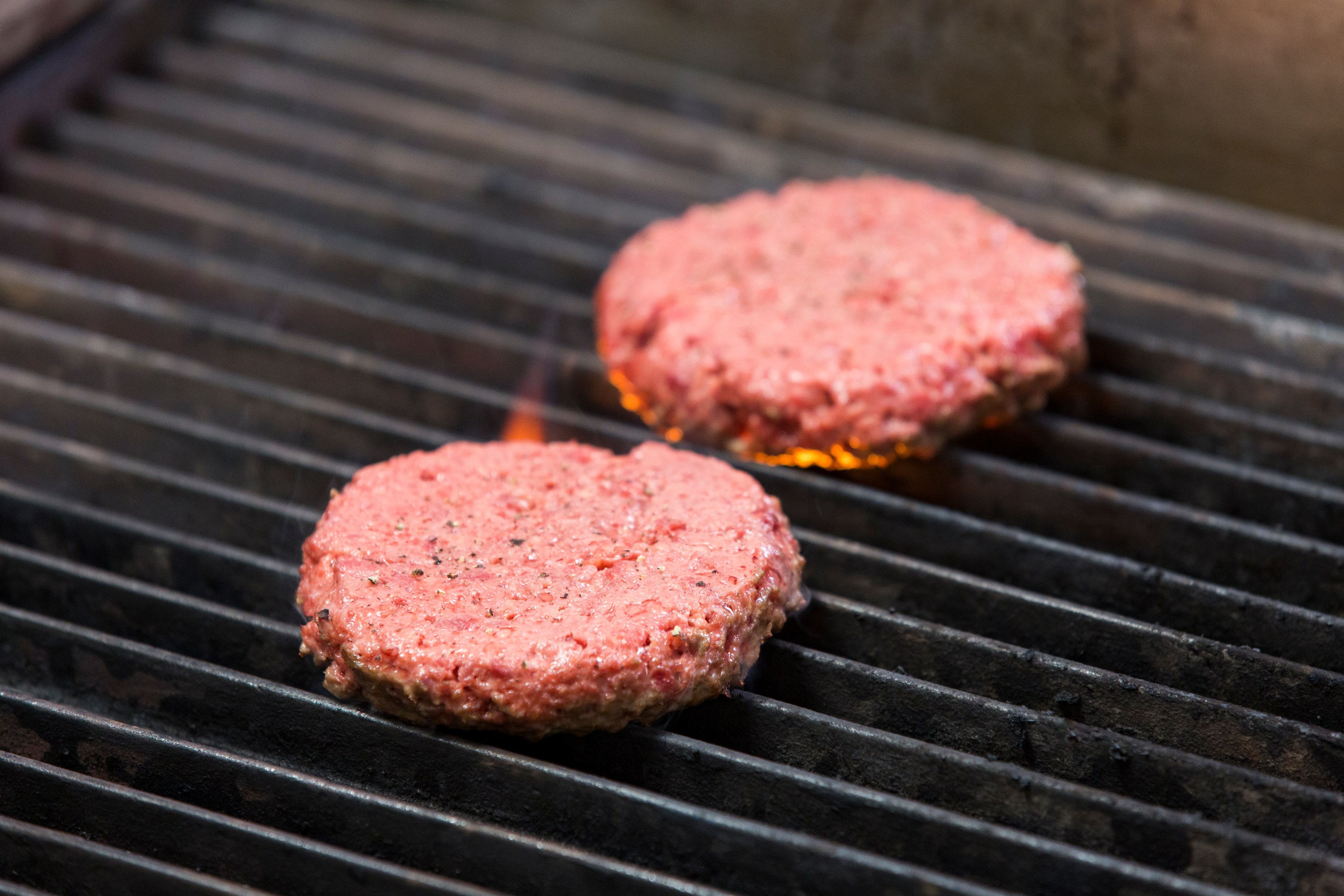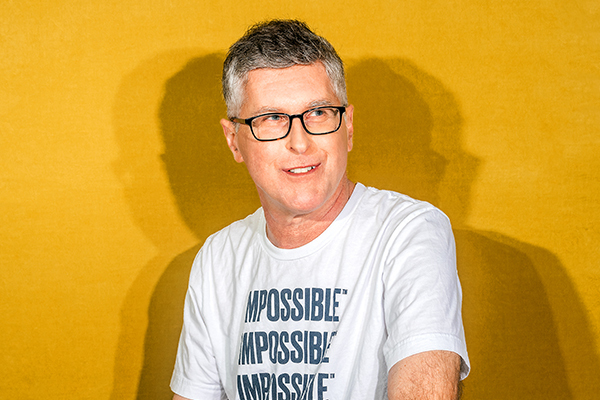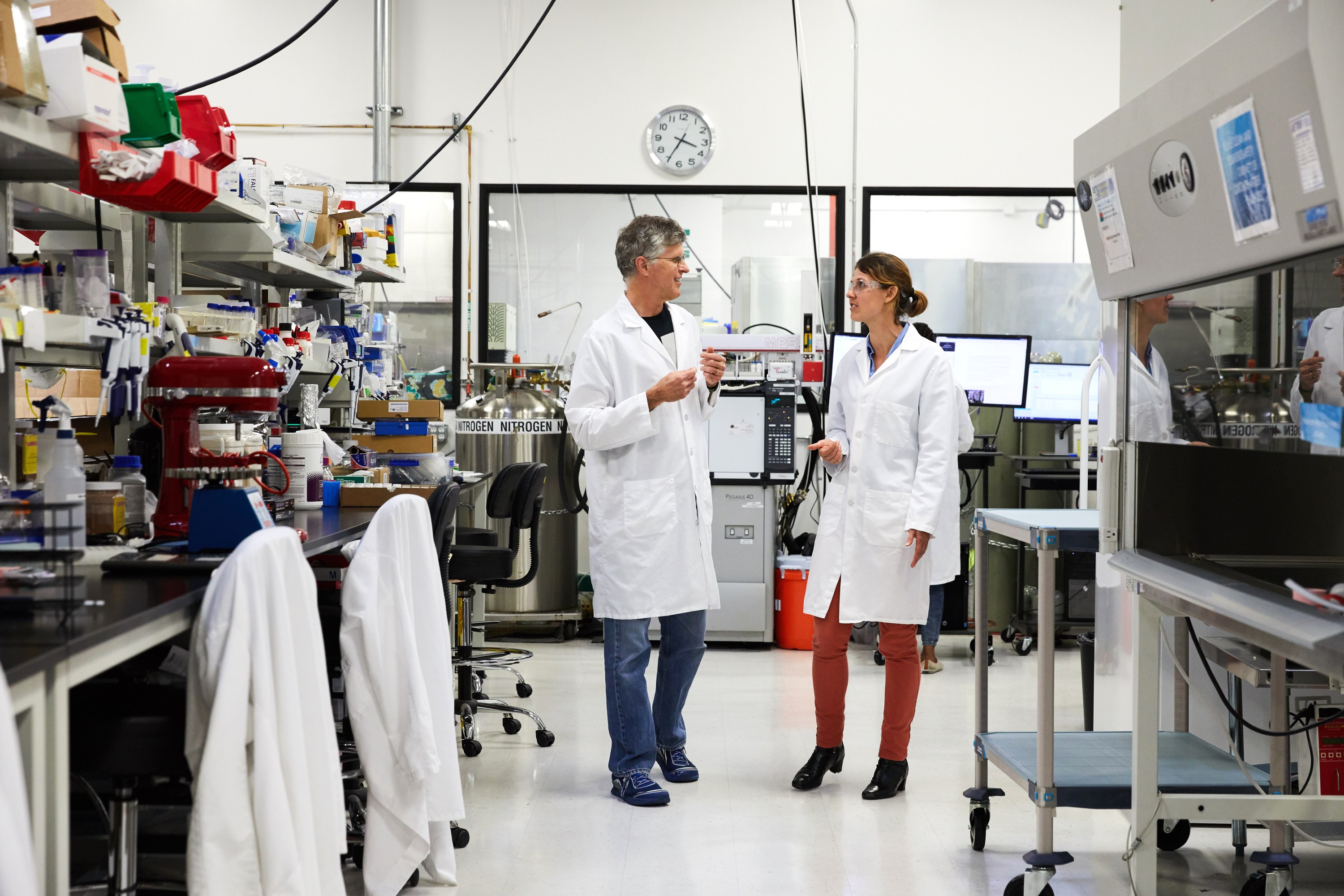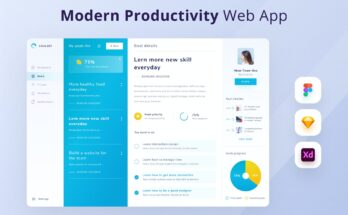Impossible Foods has continued to expand throughout the pandemic, bringing its bleeding, sizzling plant-based burgers and sausages to more than 10,000 additional US stores this year.
Now the company, which has raised $700 million in 2020, is preparing to move into new markets and product lines. On Tuesday, it will announce plans to double its research and development team in the next 12 months, adding about 150 new scientists and engineers. That includes 10 new “Impossible Investigator” roles, designed to lure top scientists by allowing them to propose their own research programs.
During a press conference, the company will also unveil a prototype of a product under development: a plant-based milk alternative. (They’re not yet discussing when it may reach store shelves.)
Impossible, founded in 2011 by Stanford biochemistry professor Pat Brown and based in Redwood City, California, developed a convincing ground-beef alternative primarily by genetically engineering and fermenting certain types of yeast to crank out heme. The company says this iron-containing compound is largely responsible for the color and taste of ground beef.

IMPOSSIBLE FOODS
Tens of thousands of restaurants now serve Impossible burgers, including Burger King.
Brown’s founding mission was to ease the environmental impact of the livestock sector, which produces about 14.5% of the world’s greenhouse-gas pollution, according to the Food and Agriculture Organization of the United Nations.
In an interview with MIT Technology Review, Brown laid out an audacious end goal: supplanting enough of the key animal products to put the industry out of business and completely wipe out those emissions. Among other things, the company is now working to develop convincing alternatives to chicken breasts and steaks, he says.
This interview has been edited for length and clarity.
Q: Why are you expanding your R&D team?
Our mission is to completely replace the world’s most destructive technology by far, which is the use of animals, by 2035. We will succeed or fail based on whether we build a complete technology platform that creates all the foods we get today from animals, but makes them more delicious, more nutritious, affordable, sustainable, and so forth.
What are the key research questions that you’re now trying to solve?
We’re building a technology platform for turning plants, ingredients from plants, into something that appears completely different from the plant, and to a consumer is meat.
What matters here is both the biochemical system, which is responsible for the dynamic flavor and aroma behavior and so forth, and also materials that have very precise properties that are somewhat exotic from a materials science standpoint.
This isn’t just about taking a bunch of standard crap, mixing it in mixing bowl, and making Cheetos out of it, or whatever. This is a much harder problem. Because for us to succeed, it’s not just that we need to throw things together in the form factor of a burger patty. We have to make something that to consumers is meat, and is more delicious, nutritious, and affordable than anything that the current technology, a cow or whatever, can produce.
What’s the next grand challenge? Are you going from ground meat to chunks and slabs, like steak or chicken breasts? Are you talking about going into milk and cheese? Are you talking about going into poultry and lamb?
We’re working on all of those things.
If we were to take a section of muscle tissue from a cow, or a pig, or a chicken, or a halibut, or even a fruit fly, and look at it under an electron microscope, they look extremely similar. So in a sense, if you solve it for one kind of meat, you’ve 95% solved it for every kind of meat.

IMPOSSIBLE FOODS
We made a very strategic choice to launch with raw ground beef, because beef is the most destructive sector of the animal ag industry by a huge margin. In the US, ground beef is the single largest-selling, so to speak, cut or category of meat. So if you want to disrupt that industry, which is our goal, that’s the obvious product to launch with.
What are some of the scientific challenges your research group would have to solve to go from ground beef to something that approximates, in a consumer mind, a slab of chicken or steak?
If you look at a steak, you realize it’s got several distinct components. It’s got adipose tissue, it’s got loose connective tissue, it’s got hard connective tissue, it’s got the muscle tissue itself.
So the diversity of materials that you can recognize as distinct materials is greater; that’s one thing. Now, most of those are probably not that important to the consumer. For example, even though your big cut of steak has nerves and lymph nodes and gristle and stuff like that in it, you probably don’t particularly mind if we leave those parts out.
Just the fat and meat for me.
Yeah, exactly. And probably for a lot of people, it’s not the bulk, kind of subcutaneous fat; it’s the interstitial, sort of thick marbling fat that you care about.
Our goal, to be honest, is to as quickly as possible make it economically unsustainable to continue to raise cows. In order to do that, I think we probably have to make two products. We never have to make beef liver. We have to make ground beef–that’s half of all the beef sales in the US–and one really good steak. We don’t have to make eight different kinds of steak in order to basically disrupt the market enough to achieve our mission.
And the characteristics of a really good steak? I think we have to have something with a very good version of that muscle structure and texture; you have to be able to create the right mechanical properties. It’s got some connective tissue, which is sort of a non-woven fabric of protein, and then it’s got the interstitial adipose tissue. And for the adipose tissue, the things that matter? Well, its mechanical properties matter to some extent, its melting behavior matters, and its flavor chemistry matters.
In contexts other than meat, when you think about forming soft materials into structures and stuff like that, that’s already a very highly developed area of engineering and materials science.
I have to admit to being just a bit skeptical in terms of how big an impact this can have. There are deep cultural ties to raising and consuming livestock around the world, and we’re expected to have a massive increase in meat demand in the developing world as we see this expansion of the middle class. So how do you appeal to these big parts of the market?
The basic answer is, you figure out a better technology platform that delivers the fundamental things that consumers want from these foods better than the incumbents. That’s the essence of it. And then you’re saying, what about all those cultural ties? We’ve done a ton of research on that, and the fact is that meat lovers around the world–it doesn’t matter how hard core they are, where they live, or anything–they love that meat is delicious. They love the familiarity, the foods they can make with it; they love the protein, the iron, the convenience, etc.

IMPOSSIBLE FOODS
But they do not love the fact that it’s made from the corpse of an animal. That’s not enough to make them not want to eat meat, but it’s just not part of the value proposition at all. We don’t have to deal with culture; we have to deal with deliciousness. And that’s a solvable problem.
What particular things do you need to solve to start really addressing the market in the developing world?
One of the things that you’re driving at, which is dead-on correct, is that we have to get the cost below the cost of the current product. Our process uses 25-fold less land, it uses nine-fold less water, 12-fold less fertilizer. There’s less labor growing crops, no labor devoted to managing livestock. So the labor costs are lower, and all the other inputs are lower costs. The economics are vastly superior. What we need to do is basically realize those essential advantages, which requires scale and it requires us to get further along, because right now we have to be constantly investing in growth, right?
So to be clear, you don’t think this is 80% of the solution. You think this could be a complete solution to the livestock emissions problem?
Cattle will be pets.
If we have a cheaper, more delicious, healthier product for consumers, I am confident that most consumers in the world will choose it over the current product. And if no one is buying the products of animal agriculture, then there will be no incentive to keep covering the planet with cows. It’s as simple as that.
It’s not that we have to replace every single thing that people value from a cow. We have to replace enough of the profitable components of a cow to make it unprofitable to grow more cows.


